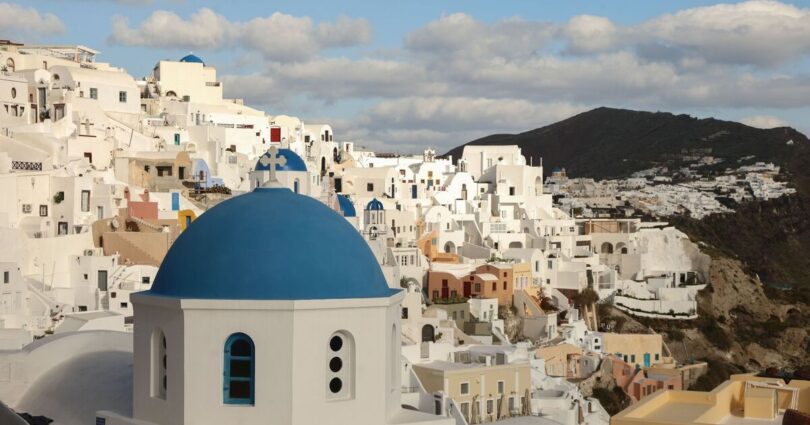Around 6,000 people are said to have fled from the island of Santorini via ferries and planes in recent days, with hundreds more expected to have left on Wednesday as tremors continued for the sixth day in a row.
Hundreds of small earthquakes were registered in the surrounding sea of Greece’s major tourist island, shaking buildings and kicking up dust on the island’s iconic rocky cliffs.
This high number of small tremors are raising fears that a major earthquake will soon rock the region.
Authorities have introduced various safety measures, including shutting schools on Santorini and the nearby islands of Ios, Amorgos and Anafi, ordering residents and hotels to empty their pools and halting construction.
Now, seismologists have given an important update on the situation in Santorini.
Seismologists estimate that the high seismic activity could take days or weeks to die down, although locals and government officials said the shaking had subsided on Wednesday.
“It has not shaken much today, I haven’t felt anything since 4 a.m.,” said Nikos Sakorafos, owner of a travel agency in the popular tourist village of Fira, which sees around 3.4 million visitors each year.
« Now, it’s a dead season for the island, most people don’t have work so it’s easier for them to leave. »
The government is due to hold a briefing on the situation on Wednesday.
Earlier this week, Greek authorities sent special forces, rescue teams, tents and drones to the island.
A high number of the earthquakes measured between 4 and 4.5 on the Richter scale, with the strongest recorded in waters between Santorini and Amorgos and by Sunday evening, rescue teams in Santorini set up tents on basketball courts and car parks.
In the event of a tsunami, residents and tourists were instructed to head inland. People were also advised by the FCDO not to attend large indoor gatherings and to avoid old or abandoned buildings.
Greece is one of the most earthquake-prone countries in Europe due to its location at the boundary of the African and Eurasian tectonic plates whose constant interaction prompts frequent quakes.
The island of Santorini and its Cycladic neighbours lie on the Hellenic Volcanic Arc – a geological formation spanning from the Peloponnese region down to Crete – and scientists have reported increased activity along a central fault line in the northern section of Santorini’s caldera.
Santorini was also the site of one of the largest volcanic eruptions in human history, around 1620 BC, which destroyed a huge part of the island and gave Santorini its current crescent shape.
The eruption was so large it is believed to have contributed to the decline of the ancient Minoans – Europe’s first major civilisation – that lived in the region at the time. It created a tsunami that devastated the island of Crete to the south and covered Santorini with ash and pumice.
The last volcanic eruption in Santorini occurred in January 1950, which sent ash and fireballs as high as 1,000 metres into the air. This was followed by lava flows that created one of the youngest volcanic rock formations in Greece – Liatsikas lavas on Nea Kameni.
Source link








